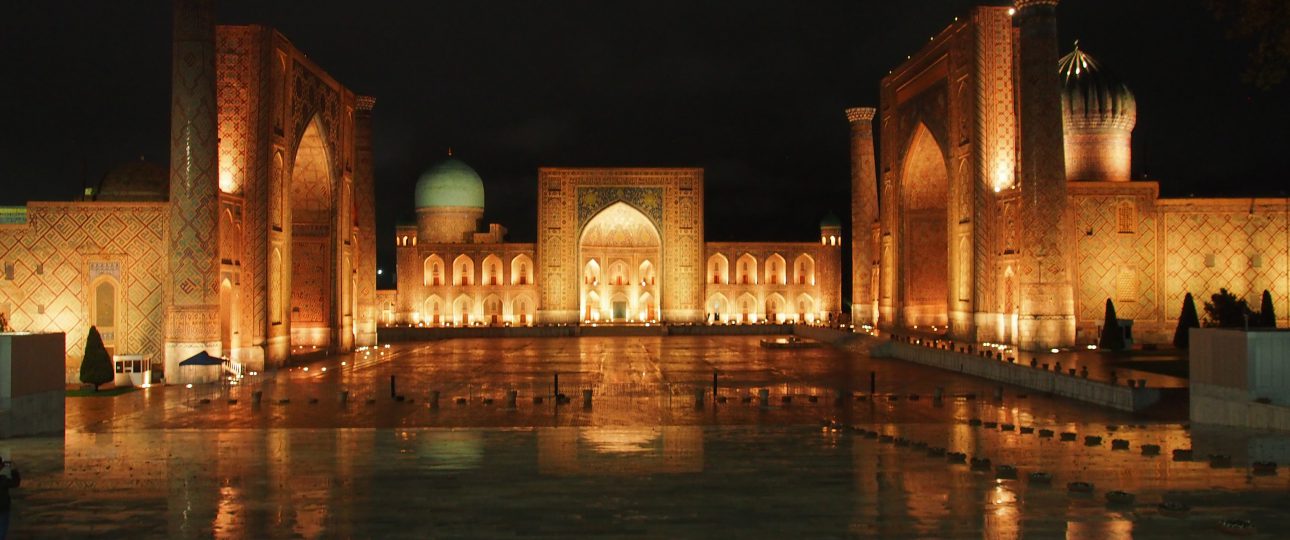Samarkand is currently the second largest city of Uzbekistan and capital of the Samarkand region. Strategically being situated on the Great Silk Road route, Samarkand was home to a diverse religious community including Buddhist, Zoroastrianism, Hinduism, Judaism, and Nestorian Christianity. Because of such diversity, it is called “The Crossroad of Cultures.”
History Of Samarkand
Samarkand was home to one of the earliest civilizations in Central Asia and was one of the oldest inhabited cities. Historically, it was the main center of Sogdian civilization which later became the capital of Sogdian satrapy. It was conquered by Alexander the Great and later fell in the hands of Arab invaders. Later Mongols conquered Samarkand in 1220. Then came the ruining of Amir Timur, and made Samarkand capital of his Timurid Empire. Under his rule, the city of Samarkand went through its golden phase of artistic construction and craftsmanship. During the Soviet period, Samarkand was made capital of Uzbek SSR before being replaced by Tashkent.
Major Sightseeing Spots InUzbekistan :
Registan
This is an architectural complex which was historically a public square where people gathered for royal proclamations. Three madrasahs along with other significant mosques and mausoleums characterize this place. The three madrasahs are:
- Ulughbek Madrasah
- Sher-Dor Madrasah
- Tilya-kori Madrasah
Ulugh Beg Observatory
Built by one of the greatest astronomer, Ulugh Beg, grandson of Amir Timur, it was a center for astronomical studies. Lately a museum next to the observatory was constructed to commemorate Ulugh Beg.
Bibi-Khanym Mosque
It was one of the prominent monuments in Samarkand which is large and at the same time magnificent. It was built by Tamerlane as a gift to his wife BibiKhanum and is now a popular place visited by tourists in Samarkand.
The Gur-e-Amir Mausoleum
This mausoleum is the family crypt of the Timurid Dynasty where Tamerlane and many of the family members are buried. In Persian, it translates into “Tomb of the King.”
Hazrat-Khizr Mosque
This is one of the oldest mosques in Samarkand built in the 8th Century. This mosque is built at the entrance to the city and named after HazratKhizr, a prominent Muslim saint.
The Shah-i-Zinda Ensemble
This prominent necropolis is located in the northeastern part of Samarkand which accommodates many mausoleums and other ritual buildings. There are now more than 20 buildings built over eight centuries.
The Shah-i-Zinda Ensemble
This museum is located in the northeastern part of Samarkand at the historical site of Afrasiyab, which is among the largest archaeological sites in the world. The museum which is divided into five rooms detailing different period of life in the ancient fort of Afrasiab has 22,000 unique exhibits on display.
Saint Daniel’s Tomb
The park-like setting of this place is the burial place with a long coffin of Saint Daniel where three world religions — Islam, Christianity and Judaism — came to worship him.
Rukhabad Mausoleum
This mausoleum is located north of The Gur-e-Amir Mausoleum. It was erected in 1380 over the grave of Sheikh Burhan al-Din Sagarji, a renowned Islamic mystic. Even though the building itself it not as large as those in Samarkand, the interior are impressive and well carved.
Samarkand hosts a treasure of unique antiquity spirit and spiritual values because of which many of the monuments are inscribed into the UNESCO World Heritage Site list. When you’re in Samarkand, it is easy to get lost in the medieval atmosphere of this place and get to experience a different world altogether.

